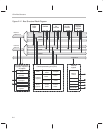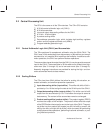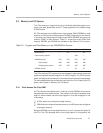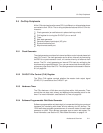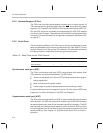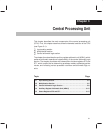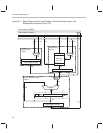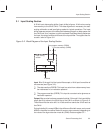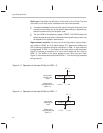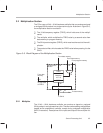
On-Chip Peripherals
2-12
2.5.5 General-Purpose I/O Pins
The ’C2xx has pins that provide general-purpose input or output signals. All
’C2xx devices have a general-purpose input pin, BIO
, and a general-purpose
output pin, XF. Except for the ’C209, the ’C2xx devices also have pins IO0, IO1,
IO2, and IO3, which are connected to corresponding bits (IO0–IO3) mapped
into the on-chip I/O space. These bits can be individually configured as inputs
or outputs. For more information on the general-purpose pins, see Section 8.6,
on page 8-17.
2.5.6 Serial Ports
The serial ports available on the ’C2xx vary by device, but two types of serial
ports are represented: synchronous and asynchronous. See Table 2–2 for the
number of each kind on the various ’C2xx devices. The subsections following
the table provide an introduction to the two types of serial ports.
Table 2–2. Serial Ports on the ’C2xx Devices
Serial Ports ’C203 ’C204 ’F206 ’C209
Synchronous 1 1 1 –
Asynchronous 1 1 1 –
Synchronous serial port (SSP)
The ’C2xx synchronous serial port (SSP) communicates with codecs, other
’C2xx devices, and external peripherals. The SSP offers:
Two four-word-deep first in, first out (FIFO) buffers that have interrupt-gen-
erating capabilities.
Burst and continuous transfer modes.
A wide range of operation speeds when external clocking is used.
If internal clocking is used, the speed is fixed at 1/2 of the internal DSP clock
frequency. For more information on the SSP, see Chapter 9.
Asynchronous serial port (ASP)
The ’C2xx asynchronous serial port (ASP) communicates with asynchronous
serial devices. The ASP has a maximum transfer rate of 250,000 characters
per second (assuming it uses10 bits to transmit each 8-bit character). The ASP
also has logic for automatic baud detection, which allows the ASP to lock to
the incoming data rate. All transfers through the asynchronous serial port use
double buffering. See Chapter 10,
Asynchronous Serial Port,
for more in-
formation.



